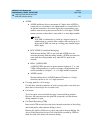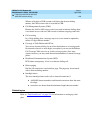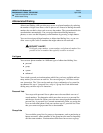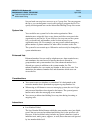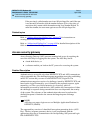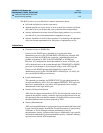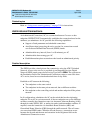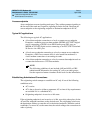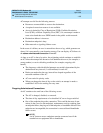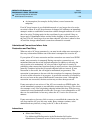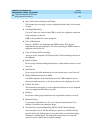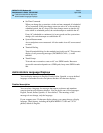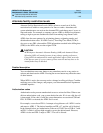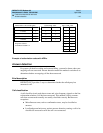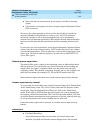
DEFINITY ECS Release 8.2
Administrator’s Guide
555-233-506
Issue 1
April 2000
Features and technical reference
1135Administered Connections
20
AC attempts can fail for the following reasons:
■ Resources are unavailable to route to the destination.
■ A required conversion resource is not available.
■ Access is denied by Class of Restriction (COR), Facilities Restriction
Level (FRL), or Bearer Capability Class (BCC). Or, an attempt is made to
route voice-band-data over SDDN trunks in the public switch network.
■ Destination address is incorrect.
■ Destination endpoint is busy.
■ Other network or signaling failures occur.
In the event of a failure, an error is entered into the error log, which generates an
alarm, if it is warranted by your alarming strategy. You can display AC failures via
the
status administered-connection command.
As long as an AC is due to be active, the originating switch continues to establish
an AC unless the attempt fails because of an administrative error (for example, a
wrong number) or service-blocking condition (for example, outgoing calls
barred).
■ The frequency with which failed attempts are retried is determined by the
administered retry interval (1 to 60 minutes) for each AC.
■ Retries are made after the retry interval has elapsed regardless of the
restorable attribute of the AC.
■ ACs are retried in priority order.
■ When you change the time of day on the switch, an attempt is made to
establish all ACs in the waiting-for-retry state.
Dropping Administered Connections
An AC remains active until one of the following occurs:
■ The AC is changed, disabled, or removed.
■ The time-of-day requirements of a scheduled AC are no longer satisfied.
■ One of the endpoints drops the connection. This could be because of user
action (in the case of a data endpoint), maintenance activity resulting from
an endpoint failure, busying out of the endpoint, or handshake failure. If the
endpoints are incompatible, the connection is successful until handshake
failure occurs.
NOTE:
An AC between access endpoints remains connected even if the
attached access equipment fails to handshake.



